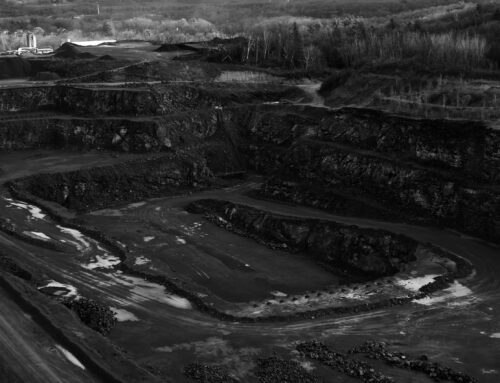Introduction

Crude oil is one of the most valuable commodities in the world, serving as the backbone of modern economies. West Texas Intermediate (WTI) crude is one of the most widely recognized and traded benchmarks among the many types of crude oil. WTI crude oil plays a crucial role in energy markets, affecting everything from fuel prices to geopolitical strategies. In this article, we will explore WTI crude oil, its characteristics, industrial applications, sources, and importance in the global oil market.
What is WTI Crude Oil?
WTI crude oil, short for West Texas Intermediate, is a high-quality crude oil primarily extracted from oil fields in the United States. It is known for its light and sweetness. It, meaning it has a low sulfur content and low density, making it ideal for refining into gasoline and other high-value petroleum products.
Characteristics of WTI Crude
- Low Sulfur Content: WTI has a sulfur content of around 0.24%, making it a sweet crude oil. This makes it easier and cheaper to refine compared to sour crude, which has a higher sulfur content.
- API Gravity: WTI has an API gravity of about 39.6 degrees, meaning it is relatively light. API gravity is a measure of how heavy or light petroleum is compared to water; higher values indicate lighter crude.
- Quality: Due to its high quality, WTI crude is favoured by refiners for producing gasoline, diesel, and jet fuel.
Where is WTI Crude Oil Found?
WTI crude oil is primarily sourced from oil fields in the United States, particularly in Texas, New Mexico, Oklahoma, and North Dakota. Major oil-producing regions include:
- Permian Basin (Texas & New Mexico) – One of the most prolific oil fields in the U.S., contributing significantly to WTI production.
- Eagle Ford Shale (Texas) – A major shale play that produces light, sweet crude.
- Bakken Formation (North Dakota & Montana) – Another major source of light crude oil.
- Cushing, Oklahoma – Known as the “Pipeline Crossroads of the World,” this location serves as a major storage and delivery hub for WTI crude.
Industrial Uses of WTI Crude Oil
WTI crude oil is a crucial raw material used across multiple industries. Some of its primary industrial applications include:
1. Fuel Production
The primary use of WTI crude oil is to produce transportation fuels, including:
- Gasoline – The largest end-use product, fueling millions of vehicles worldwide.
- Diesel – Used in trucks, buses, and industrial machinery.
- Jet Fuel – A critical fuel for the aviation industry.
2. Petrochemicals
Refined WTI crude is used to produce a range of petrochemicals, which are essential in making:
- Plastics
- Synthetic rubber
- Fertilizers
- Detergents
- Pharmaceuticals
3. Lubricants and Greases
High-quality lubricants derived from WTI crude help in reducing friction in machinery, ensuring smooth operation in industries such as automotive, aviation, and manufacturing.
4. Heating and Power Generation
- In some cases, WTI-derived products are used as heating oil for homes and businesses.
- Certain power plants use petroleum-based fuels for electricity generation.
How WTI Crude Oil is Traded
WTI crude oil is a major benchmark in global oil markets. It is traded on futures markets through contracts listed on the New York Mercantile Exchange (NYMEX), which is part of the Chicago Mercantile Exchange (CME). These contracts are standardized agreements to buy or sell WTI crude at a future date and price.
WTI vs. Brent Crude
WTI crude is often compared to Brent crude, another benchmark oil from the North Sea. While WTI is primarily produced in the U.S., Brent crude is extracted from the North Sea and used as a global benchmark. The key differences include:
- Location: WTI is landlocked (Cushing, Oklahoma), while Brent is seaborne (easier to transport internationally).
- Quality: WTI is lighter and sweeter than Brent, making it slightly more desirable for refining.
- Pricing: Historically, WTI traded at a premium to Brent, but in recent years, Brent has become more expensive due to logistical advantages.
Factors Influencing WTI Crude Oil Prices
WTI crude oil prices fluctuate due to various factors, including:
- Supply and Demand – Increased production can lower prices, while higher demand (e.g., travel season) can push prices up.
- Geopolitical Events – Conflicts, sanctions, and trade agreements impact global oil supply and pricing.
- OPEC Decisions – The Organization of the Petroleum Exporting Countries (OPEC) influences global oil prices through production quotas.
- U.S. Shale Production – The rapid expansion of shale oil in the U.S. affects WTI supply.
- Global Economic Conditions – Economic growth increases demand, while recessions reduce it.
Environmental and Economic Impacts of WTI Crude
Environmental Considerations
- Greenhouse Gas Emissions: Burning fossil fuels releases carbon dioxide, contributing to climate change.
- Oil Spills: Pipeline leaks or transport accidents pose environmental risks.
- Land and Water Impact: Drilling operations can affect ecosystems and water sources.
Economic Importance
- Job Creation: The oil industry supports millions of jobs in drilling, refining, and logistics.
- Energy Independence: Domestic production of WTI crude reduces reliance on foreign oil.
- Market Stability: WTI serves as a key indicator for energy market trends and global economic health.
Future of WTI Crude Oil
With the global shift toward renewable energy, the long-term future of crude oil is uncertain. However, WTI crude remains essential shortly due to:
- Ongoing demand for gasoline, diesel, and jet fuel.
- Advancements in cleaner refining technologies.
- Potential use in carbon capture and alternative energy integration.
Conclusion
WTI crude oil is a critical commodity in global energy markets. Its high quality, light and sweet nature, and strategic production hubs make it a favoured crude benchmark. While environmental concerns and alternative energy sources challenge its dominance, WTI crude continues to play a key role in modern industries and economies. Understanding its characteristics, industrial uses, and market dynamics is essential for investors, policymakers, and businesses navigating the ever-evolving energy landscape.


